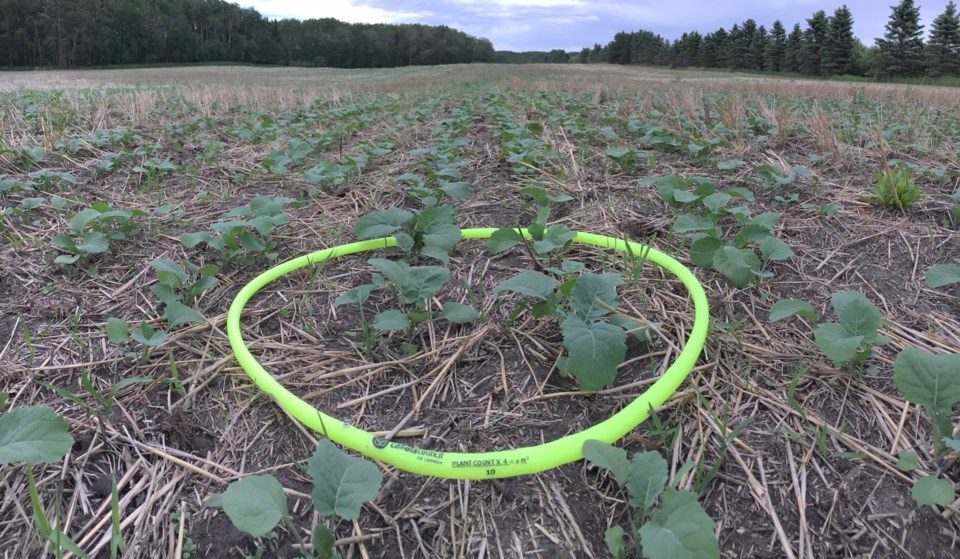Multiple canola plant counts done about a month after seeding will provide a report card on the seeding operation and help with planning for the rest of 2020.
Farmers and agronomists can use multiple counts averaged across a field to calculate emergence percentage and seed survival. Use the “emergence” tool under the Seeding Rate tab at canolacalculator.ca.
Farmers and agronomists can also use these counts to determine how much care this field will need all season long. For example, if counts are below the recommended five to eight plants per square foot, all remaining plants may need extra attention to bring them to harvest and preserve the yield potential of the crop.
How to count with a hula hoop
• Quarter-square-metre hoop. Use a hoop with an inside diameter of 56 cm and circumference of 177 cm which provides an area of 0.25 of a square metre. Count the number of plants inside the hoop, and multiply by four to get plants per square metre. To convert to plants per square foot divide the plants per square metre by 10.
• Two-square-foot hoop.Use a hoop with an inside diameter of 19″ and circumference of 60″, which provides an area of two square feet. Count the number of plants inside the hoop and divide by two to get plants per square foot. Counting with this larger hoop (instead of a one-foot-square hoop) will incorporate plants from two seed rows and give a larger sample size, helping to improve the accuracy of counts.
• For other sized hoops, determine the area using the formula A=πr2 (r= radius, π = 3.14).
How to count with a metre stick
• Use a metre stick and count the seedlings per metre of row. Take that number and multiply by 100 then divide by the seed spacing in cm to get plants per square metre.
• For example, 25 plants per metre multiplied by 100 then divided by 25 cm (10” row spacing) is 100 plants per square metre (approximately 10 per square foot).
Do not include volunteer canola plants in plant density counts or emergence calculations. Look for blue seed coats attached to seedling root systems and avoid counting plants which are growing outside of seed rows.
Many factors can cause lower-than-expected plant counts. These can include weather factors such as wind, rain and frost, insects such as flea beetles and cutworms, seedling diseases, and seeder issues such as seeding too deep or putting too much fertilizer in the seed row. While doing the counts, some scouting and records-checking can help to identify the key causes.
For more details on how to do counts, including videos, and on the common causes for missing plants, please read “Plant counts…and reasons for lower numbers” at canolawatch.org. While there, you can sign up to receive the timely Canola Watch email updates throughout the growing season.
– Autumn Barnes is an agronomy specialist with the Canola Council of Canada. Email [email protected].

